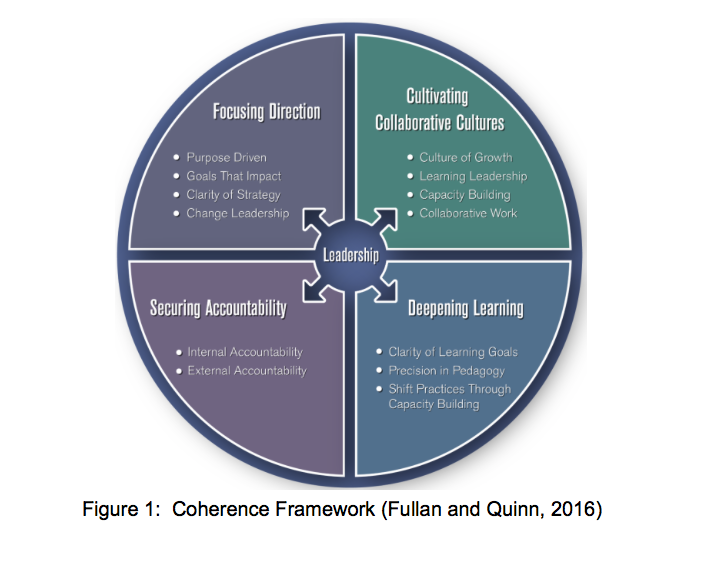How Coherent is Your School and District?by Joe Schroeder, PhD, Associate Executive Director, AWSA If you are committed to deep student impact, you want to know more about coherence. Why? Because as is detailed in Coherence: The Right Drivers in Action for Schools, Districts, and Systems (Fullan and Quinn, 2016), organizational coherence is what distinguishes schools and school systems that are making significant impact on student success from others. Coherence involves “a combination of a small number of ambitious goals being relentlessly pursued, being vigilant about reducing distractors, helping with professional capacity building, using student and other data transparently for developmental purposes, building in strategies for implementers to learn from each other on an ongoing basis, and marking progress with lots of feedback and supportive intervention.” That’s a mouthful for sure, but it’s the sort of work -- through a variety of approaches -- that we are facilitating with teams in our SAIL Academy. Creating a coherent school/district requires that leadership simultaneously is working on four important and interconnected areas: focusing direction, cultivating collaborative culture, deepening learning in areas of focus, and securing collective accountability. While we use a variety of tools to help our SAIL teams make sense of these responsibilities within their local context, the Coherence Framework lays out the general foundation:  One of the greatest gifts of the work that I do is to be able to learn alongside the education leaders with whom I interact. Through our five years to date of working with dozens of school- and district-based teams in our SAIL Academy, we have learned so very much about common problems of practice, challenges to anticipate, tools to help teams navigate the journey, etc. And what Fullan and Quinn describe in Coherence resonates greatly with themes that I and the other SAIL faculty / coaches are finding true in supporting the work of our own SAIL teams. Here are a few particularly resonant takeaways that I believe can be helpful for education leaders at both the school and district level:
If you are finding resonance in this article to your own leadership situation and are interested in learning more individually and/or with a team, grabbing a copy of this book and/or considering registration for next year’s SAIL Academy (for which registration opened earlier this month) could be a great next step. And, as always, if you have any questions in follow-up, do not hesitate to reach out to me at [email protected] Blessings and peace to you and yours in this holiday season -- and beyond! Reference
Fullan, M. and Quinn, J. (2016). Coherence: The Right Drivers in Action for Schools, Districts, and Systems.
Read more at:
|
